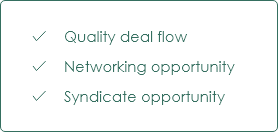What is a product?
How do you apply The Lean Methodology to build your product?
Step 1: Develop a hypothesis of the problem that you believe you are solving with the product
Start with a clear hypothesis of what to expect and then test those expectations—test whether a product or service delivers value to customers once they are using it. The goal is not to find the average customer but to find early adopters - the customers who feel they need the product the most; those are the customers who tend to be forgiving of mistakes and are eager to give feedback.
Step 2: Build a minimum viable product (MVP)
A minimum viable product helps the entrepreneur to start the learning process early, and it is the fastest way to Build-Measure-Learn. An MVP aims to allow the entrepreneur to set aside professional quality standards by launching an MVP to save time, money, and energy to ensure that they're building a product people actually want.
Instead of releasing your MVP to a large sample, use a smaller sample and give them the VIP treatment to find out what your customers genuinely want. According to the Lean Startup Method, this is how you achieve massive success, and build a product that customers actually want.
Step 3: Measure
Step 4: Learn from the results and make a decision, either to pivot or to persevere
It is very expected in the first months of your startup to change the course of the company based on the performance in the market and feedback from customers.
Perseverance with your current business strategy means that you still believe in what you want to achieve, and you will only implement small changes and updates every day using the Build-Measure-Learn circle to develop continuously. Examples of perseverance are: understanding the features that customers use and not use, knowing which sales copies convert more, and understanding which methods generate the highest engagement rates in ad campaigns.
Pivoting is what to consider when you arrive at the conclusion that you are not making any progress or insufficient progress towards the product/market fit. Changing the path is heading in a new direction, with a new mission about your product, strategy, and business model. For example, when you switch your business model from subscription-based to pay as you go or when you change the segment of the target customers.
Do not waste time or money by developing a product with features that no one wants. Let the MVP development process build a foundation for your startup success.




